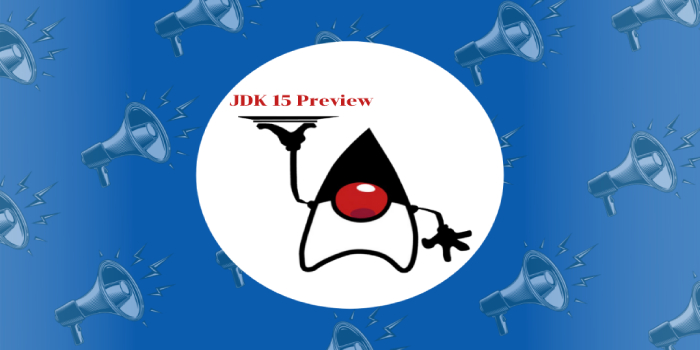
JDK 15 Preview – Text Blocks, Garbage Collectors & More Java Features
Java has started working on the next version of its development kit, JDK 15. The announcement was made following Following the release of Java 14. As of now, we know a few key features to be released with the new version. These include the addition of text blocks, garbage collector, hidden classes, and removal of the Nashorn JavaScript engine. These features have the potential to significantly enhance Java development services across different areas.
Java has planned to build all these features before the official release of the JDK 15 in September 2020. These upgrades will be the basis for the next version of the Java Standard Edition. Let’s discuss what we can expect from these new features.
Important New Features in the JDK 15
1. Hidden Classes
Hidden classes cannot be used by the bytecode of other classes. These are created for frameworks that generate classes at runtime. These classes are used indirectly through reflection. Hidden classes are part of an independently-uploaded access control nest. This upgrade is supposed to improve the efficiency of all languages on the Java virtual machine. The JVM would enable a standard API to define hidden classes that are not discoverable and have a limited lifecycle. This change essentially aims to allow frameworks to define classes as non-discoverable implementation details of the framework. Such improvements would substantially enhance Java web application development and other coding areas.
2. Text Blocks
With new text blocks, Java aims to simplify the code writing with easy-to-express strings spanning several lines of the source code. A text block is a multi-line string and it avoids most escape sequences by automatically formatting the code string. Such text blocks would significantly enhance the readability of stings in Java programming. Text blocks also intend to support the migration from string literals. This would be done by enabling the new constructs to express the same set of strings as a string literal. Java development services using such text blocks would have better codes and functionality in software solutions.
3.The ZGarbage Collector
Java initially integrated the Z garbage collector in JDK 11. Until now it was an experimental feature. The Z Garbage Collector is a scalable, low-latency tool in JDK. Java has made many improvements in the Garbage Collector since its integration in 2018. These improvements include concurrent class unloading, managing unused memory, and support data-class sharing, among others.
4. Shenandoah Garbage Collector
This is a low-pause-time garbage collector. Like the Z garbage collector, this too has been an experimental feature (since JDK 12). The Shenandoah garbage collector is supposed to become a production feature in JDK 15. Garbage collectors play a crucial role in the efficiency of an enterprise application in Java.
5. Removal of Nashorn JavaScript Engine
Java added Nashorn in JDK 8 (released in 2014). But it has since been made obsolete by technologies like GraalVM. The Nashorn code is based on the Da Vinci Machine, a reference implementation of Java Specification Request. The OpenJDK 15 plans to remove the Nashorn APIs and the command-line tool used for Nashorn.
Conclusion
JDK 15 would be most likely a short-term feature release rather than a full-blown upgrade. The release will support for six months according to Oracle’s six-month release schedule. By leveraging these improvements, developers can enhance Java-based coding. At Java India, we always stay updated with every improvement and bug fix released by Java. With a team of exceptionally skilled Java developers, we’re prepared to address every development requirement. You can hire Java developers from us to build highly customized and efficient enterprise solutions.
FAQs

Q. What is the use of Java Development Kit?
The Java Development Kit (JDK) is a software development environment used for building in the Java programming language. It includes the Java Runtime Environment (JRE), an interpreter/loader, a compiler, an archiver, a documentation generator, and other Java development tools.
Q. What is Java programming used for?
Java is a widely-used general-purpose programming language. Java is designed for use in the distributed environment of the internet. It is the most commonly used for Android mobile apps. Java is also extensively used for developing enterprise software applications.
Q. How much does it cost to build an enterprise application in Java?
Java-based enterprise software applications have unmatched efficiency. The cost of developing such software solutions mainly depends on your requirements. Basic solutions cost lower than the ones with advanced features. Java India offers industry-best solutions at competitive pricing.

